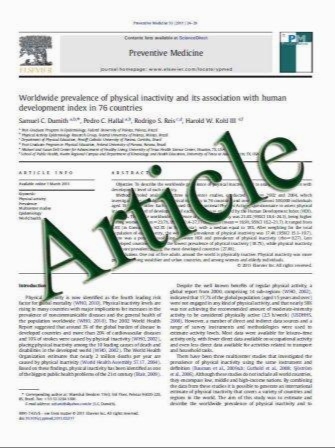Serum asymmetric dimethylarginine (ADMA), homocysteine, vitamin B12, folate levels, and lipid profiles in epileptic children treated with valproic acid
- نوع فایل : کتاب
- زبان : انگلیسی
- مؤلف : Ozlem Ozdemir & Ayten Yakut & Ener Cagri Dinleyici & Sultan Durmus Aydogdu & Coskun Yarar & Omer Colak
- چاپ و سال / کشور: 2011
Description
Recent reports have demonstrated elevated serum homocysteine (Hcy) levels in children receiving valproic acid (VPA) therapy. Elevated Hcy levels might play a potential role in the resistance to antiepileptic drugs, and might lead to an increased risk for a vascular disease. It has been reported that elevated total homocysteine (tHcy) levels are associated with elevated asymmetric dimethylarginine (ADMA) levels, which are factors that may be better indicators of endothelial dysfunction compared to serum homocysteine levels, because they are less sensitive to changes, such as fasting status, physical activity, and other factors. In this study, we aim to evaluate serum ADMA, Hcy, lipid, folate, and vitamin B12 levels in epileptic children, receiving VPA monotherapy. Forty-four epileptic children, receiving VPA monotherapy for at least 6 months and 28 healthy children aged between 4 and 16 years, were recruited. Serum lipids, lipoproteins, folate, vitamin B12, Hcy, and ADMA levels were analyzed in both study groups. Serum Hcy, ADMA, and vitamin B12 levels were higher in patients than in controls (p<0.001 for tHcy and ADMA levels; p<0.05 for vitamin B12 levels); however, serum lipid, lipoprotein, and folate levels were similar. According to the duration of epilepsy, serum tHcy, ADMA, and triglyceride (TG) levels were higher in patients with epilepsy for .2 years than in patients with epilepsy for <2 years (p<0.001 for serum ADMA levels, p<0.01 for tHcy levels, and p<0.05 for serum TG levels). Similarly, with respect to the duration of VPA therapy, serum tHcy, ADMA, and TG levels were higher in patients who had received VPA therapy for more than 2 years (p<0.001 for serum ADMA levels, p<0.05 for serum tHcy levels, p<0.01 for TG levels). Serum ADMA levels were significantly higher in patients receiving VPA at the dose of 25.30 mg/kg/day than in those receiving 20 mg/kg/day (p<0.01). In conclusion, our study found increased serum ADMA levels and increased tHcy levels in epileptic children receiving VPA monotherapy. Increased serum ADMA levels were demonstrated in epileptic children who have had a seizure history greater than 2 years, and have used VPA therapy for more than 2 years, and have received higher doses of VPA. Routine monitoring of serum ADMA and tHcy levels might have beneficial effects for patients receiving long-term VPA therapy, especially in children who have other potential risk factors for vascular diseases. Further studies are needed to investigate serum ADMA and Hcy levels, and the presence of vascular disease, as well as the potential interactions between serum ADMA levels and seizure control.
Eur J Pediatr (2011) 170:873–877 DOI 10.1007/s00431-010-1366-5 Received: 23 September 2010 / Accepted: 24 November 2010 / Published online: 8 December 2010


